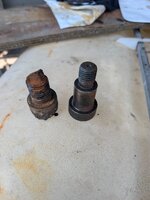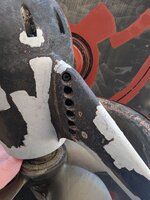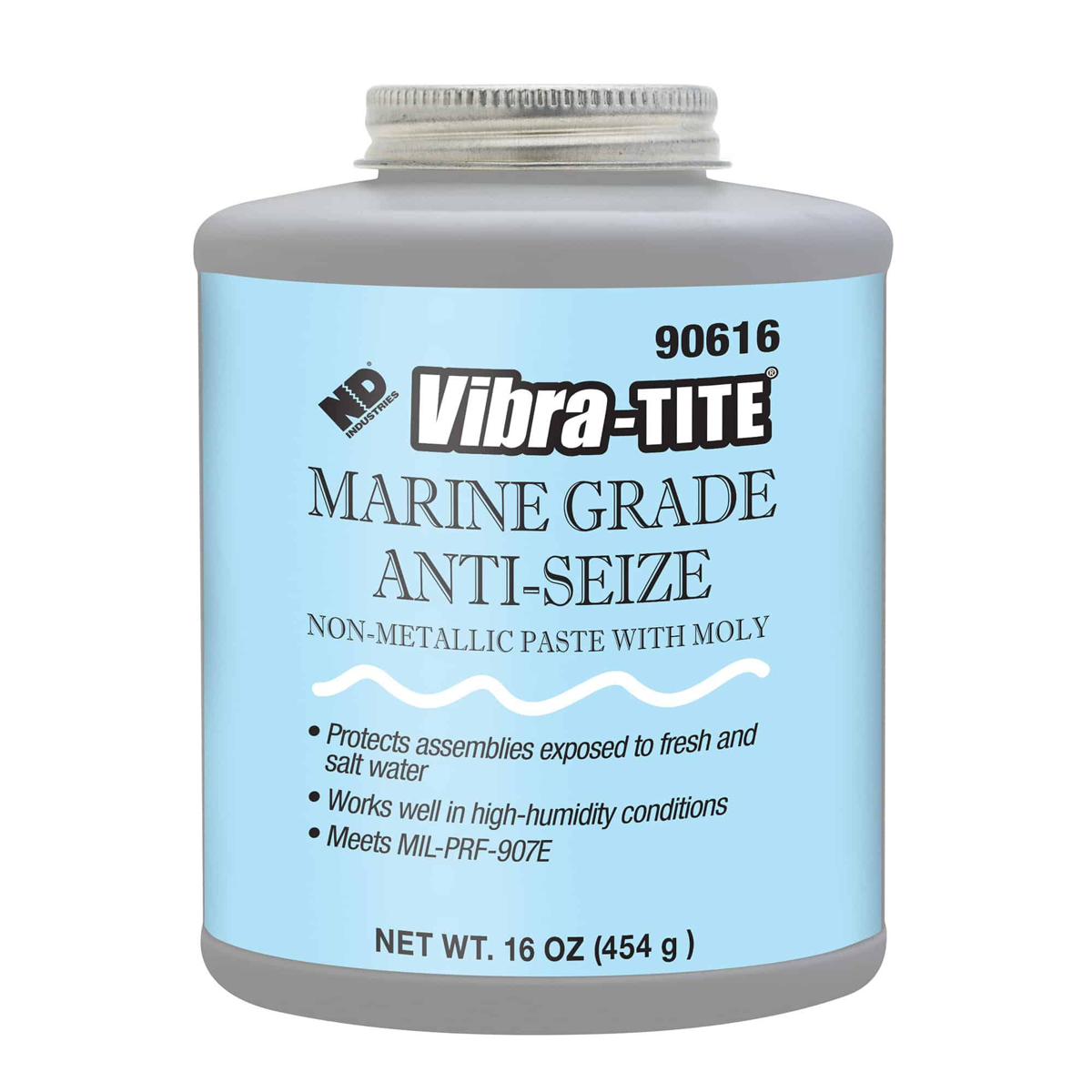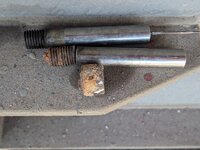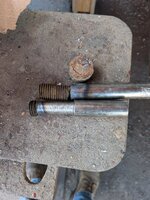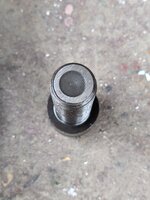Off the top:
https://www.boltcouncil.org/files/HydrogenEmbrittlementInSteelFasteners-Brahimi.pdf
Not sure it's hydrogen. It could be, but what I have seen in hydrogen embrittlement has been like the part is made of glass; just shatters right away.
However I cannot say I have seen every possible case and usually the fracture, such as from fatigue, goes perpendicular to the axis rather than this weird cone.
The usual source of hydrogen is some part of the manufacturing process, such as pickling or electroplating or both. This report describes what the metallurgists I worked with had to say on the subject; mainly that plating or passivation should be followed by baking to cause the hydrogen to exit.
It also mentions the failure of fasteners that are subject to high temps and the problem that cadmium plate poses as a stress risk. There was some engine the supplier had used cad plating on the exhaust headers and they had a 100% fail rate. The spec for the fastener specified "NOT FOR USE ABOVE X00ºF" of some similar and suspiciously low limit. ( I forget the exact temperature. It's been 20 years.)
So, if unsure, you could simply require baking the fasteners at a few hundred ºF for several hours before installation as mentioned in the report.
---
This site has pictures of various failures; the one that matches is stress corrosion fracture:
https://smrp.org/News/Solutions-Arc...y-Learn-to-Recognize-Mechanical-Failure-Modes
Stress Corrosion Cracking
Bolts being under constant tension leave them susceptible to stress corrosion cracking (SCC) if they are exposed to water-based corrosion agents. The effects of any corrosive environment are made worse at warmer temperatures. Over time, bolts exposed to the wrong compounds can begin to suffer cracking and eventually fail. Each material type is susceptible to different corrosion agents. Hardened carbon steels are at risk of SCC when exposed to a variety of compounds including ammonia, caustics and sulphur-based compounds. Stainless steels are most susceptible to chloride-based cracking.
---
Other failures of this type produce a cup-and-cone surface pair when the fastener is not strong enough, though those seem to have a lot more tensile section reduction. Maybe the stress corrosion cracking causes the tensile failure without allowing much reduction in section.
---
Recommendation - install the bolts with polysulfone rubber sealant. Apply liberally to threads and ensure all small cracks that could let water get into the threads are filled, like under the head. It cannot corrode if it cannot get wet.
